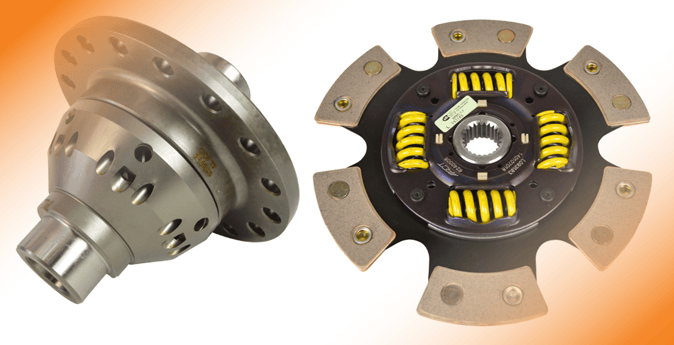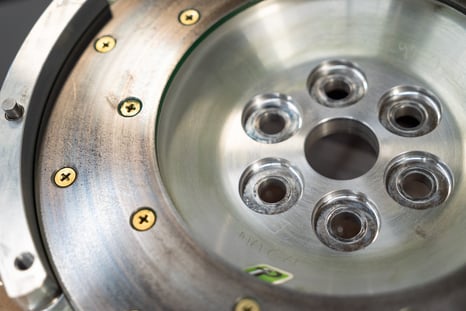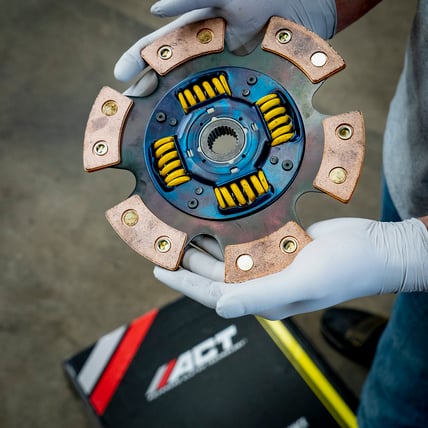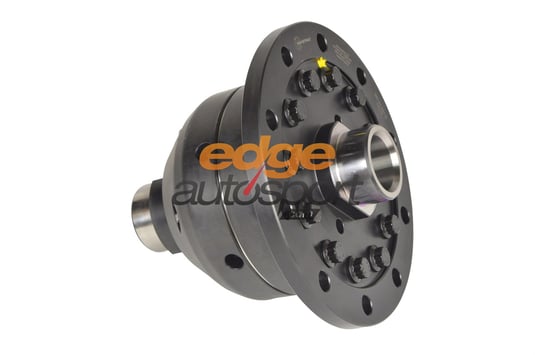Search for topics or resources
Enter your search below and hit enter or click the search icon.
December 5th, 2022
2 min read

When it comes time to replace the clutch on your Focus ST, an opportunity arises to kill a few birds with one dropped transmission. Not everyone NEEDS an upgraded LSD, but will an upgraded differential give your car the potential to handle better? Yes. The internet loves to argue about understeer and necessity when thinking about upgrading the diff, but the fact is: better differential = better grip, and grip is good (if you know how to use it).

If you are narrowing down your clutch choices by comparing torque ratings, you absolutely should consider upgrading your differential. If you are unsure which clutch will be best for your weekend canyon runs, you should also seriously consider the upgraded diff. Let's talk about the clutch first.
All performance upgrades live on a scale from comfortable to full race, clutches are no exception. Comfort parts are soft, easy to use, and generally not fast. Race parts are the opposite; firm, require more skill, and can be fast when applied correctly.

Whether you are going for ACT or Southbend, Clutchmasters or SPEC, every brand has similar offerings for your build. Understanding where they land on the comfort to performance scale is how to pick the right one for you.
Starting on the comfort side, the FoMoCo OEM clutch is a great baseline. A heavy dual mass flywheel, full face clutch with semi metallic friction surface, and moderate a pressure plate is what they consider a performance clutch. That clutch is designed to be very easy to use, and capable of transferring the stock power to the front wheels effectively around town. Changing any of those three components will change the feel of your clutch, and allow you to transfer more power to the road as you make more power at the engine.

A lighter flywheel saves weight, spins up to speed quicker, but also slows down quicker due to the lower mass and inertia. This means you can blip your throttle and climb up RPMs quickly for a nice rev match, but the RPMs won't float at that high point for long so you need good timing to hit the sweet spot.

The clutch itself comes in numerous configurations from full face to 6 puck, and even multiple disc styles. Each design results in some amount of bite and grip. Less slip and more bite means smooth transitions at low speeds will require a lot of finesse from the driver. That is the trade off if you want to lock down more ponies. Full face has less bite than 6 puck, and while dual plates can hold a lot of power, they aren't always the best for around town.
-1.png?width=421&height=280&name=South%20Bend%20Clutch%20Ford%20Focus%20ST%20Pressure%20Plate%20(1)-1.png)
Finally, the pressure plate is what sandwiches it all together. The more pressure, the more friction, and the more torque your kit can ultimately withstand. But don't forget that you have to release that pressure every time you want to change gears. If you have a lot of traffic on your commute, you are going to want a lighter pressure plate. If you are building a race car, don't skip leg day.
A quick googling will tell you the people who are demanding more from their STs all regard the upgraded differential as the most dramatic single upgrade you can install. And while there is an argument for the casual driver never knowing the difference, the physics theory doesn't lie, torque biasing will help you put torque down on the pavement. But which one do you need?

Over the years three brands have proven themselves as the best reasonably priced options: Wavetrac, Quaife, and Mfactory. While there are other options, these three are the most widely used and any of them will be a good choice for your car. The Mfactory is the least expensive, Wavetrac tends to have better reviews overall, and Quaife has been around the longest. All three are mechanically driven, virtually zero maintenance, and better than the OEM.
The only downside is, an aftermarket LSD costs money. That's basically it. So if you save on labor costs by knocking out both the clutch and LSD in one install, you are coming out ahead. With some more practice, you should start doing the same at the track.
Topics: